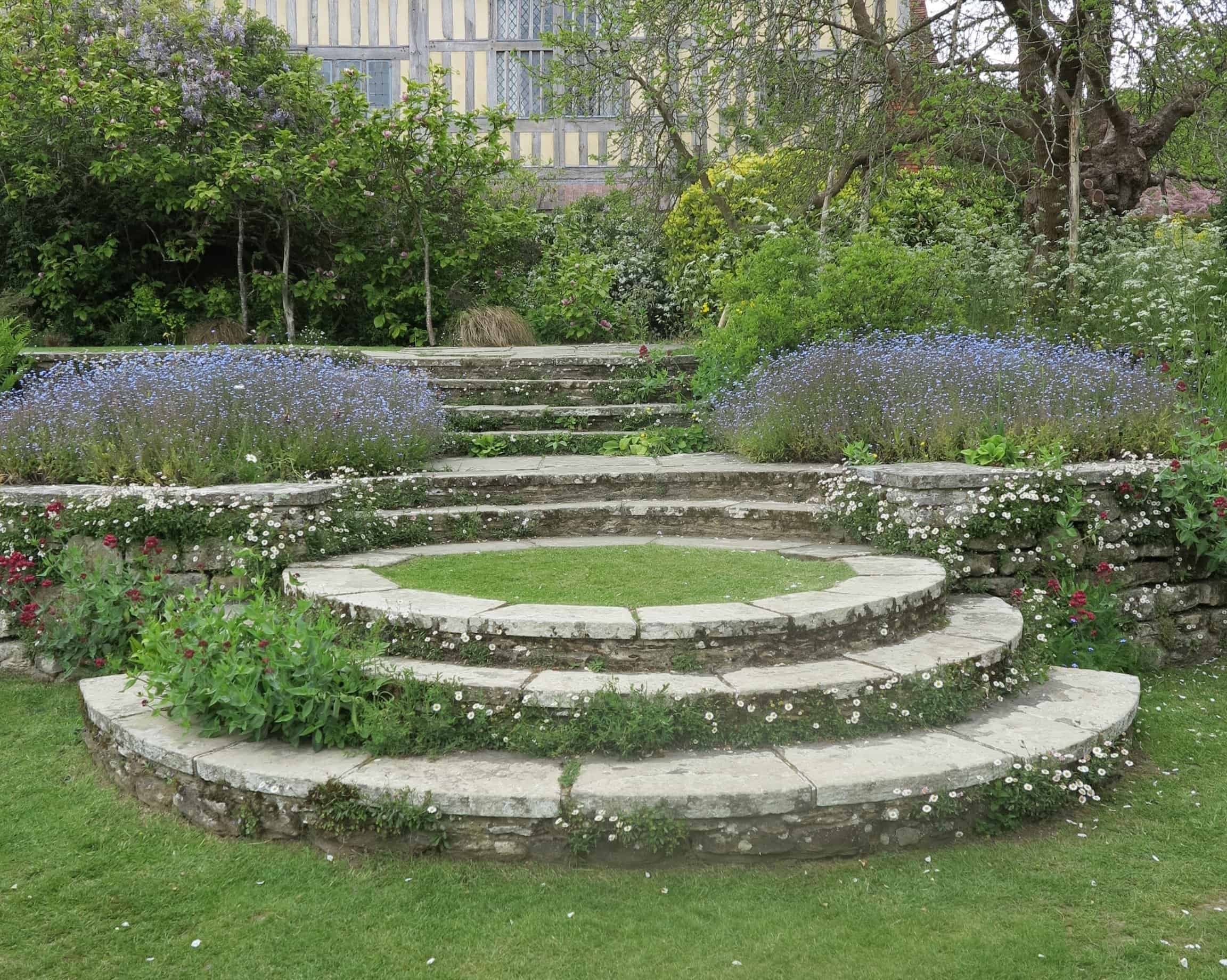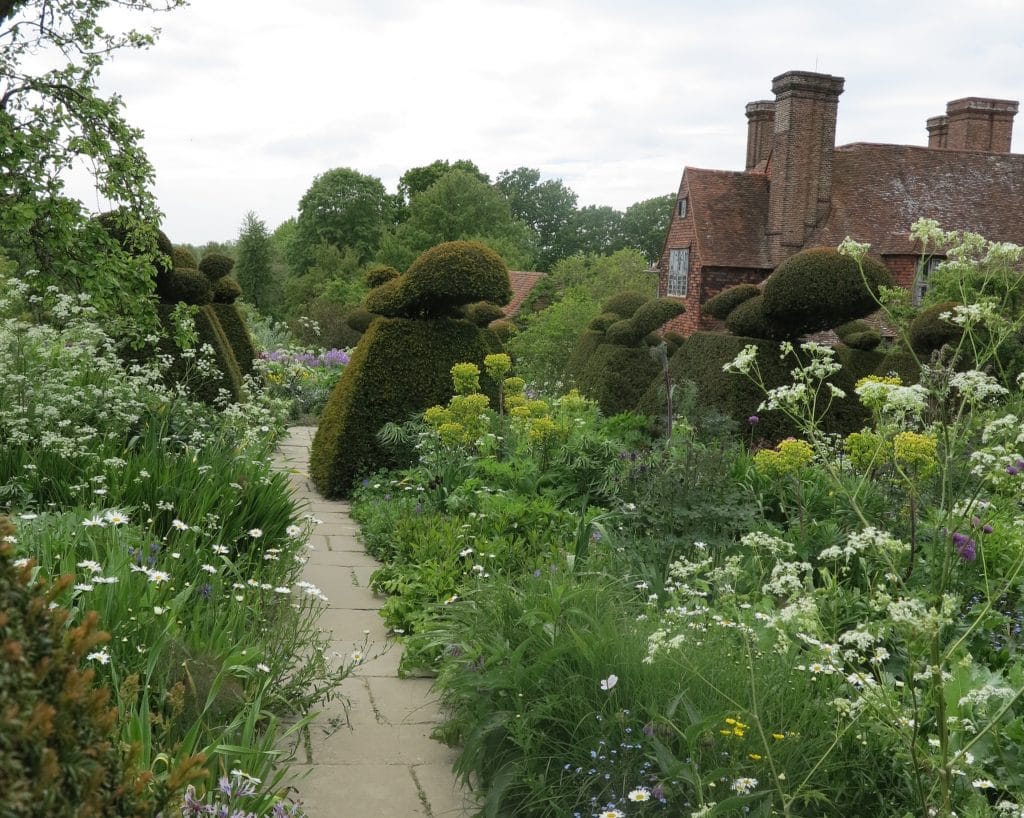
Great Dixter in East Sussex, England, is a mecca for avid gardeners. Michael and I visited last May, spending several hours marvelling at the topiaries, plant combinations and container displays, as well as enjoying a guided tour of a few of the lush perennial beds with Fergus Garrett, head gardener and chief executive officer at Great Dixter. We came away full of inspiring ideas for planting.
Garden Making No. 25 Plants & Plans includes an article on the educational opportunities at Dixter, but I want to share some observations and photos from our visit to the garden. Although gardening in England is vastly (laughably! staggeringly! amazingly!) different from gardening in Canada, there are valuable plant and design lessons to be learned while visiting any garden, especially when being led about by one of the most enthusiastic, passionate and knowledgeable gardeners I’ve met.

First, some background for those unfamiliar with Great Dixter, home of legendary garden designer and writer Christopher Lloyd (1921–2006). Lloyd lived his entire life in the manor, which is as famous as the garden that surrounds it. The 25 books and dozens of magazine articles he wrote — remarkably witty, detailed, opinionated — influenced gardeners around the world. Unlike the fate of many grand estates that decline or disappear when their owner is gone, Great Dixter’s position in the gardening firmament has remained secure, thanks to Fergus and the Great Dixter Charitable Trust. Hand picked by Lloyd to ensure the garden remained relevant and dynamic, Fergus came to Dixter in 1992 and worked alongside Lloyd until his death.

The morning we visited, Fergus led us through borders near the house — at a very brisk pace — as he began making a list of what succession planting needed to be done by students in the upcoming weeks. “This is the first time I’ve committed it to paper — usually I do it all in my head,” he said.
It’s important to plan ahead to make sure there are no gaps, he told us. “It’s not enough to walk around, saying this looks good. We need to know how it will look in a few weeks and plan for it.” The intensity and layering may look effortless, but it’s carefully planned, he says, as he pushes aside plants at their peak to show us what will bloom next. Pointing to a bed woven with a few clumps of clear pink early poppies, he wonders about including more next year and adding deep purple columbines to enhance the combination.

Most of the beds at Dixter have five layers — or stages — of bloom. In Canada’s shorter growing season, it’s difficult to achieve a full five, but I came home resolved to extend the season of bloom in our garden with more early spring and late fall plants. And to plant more narrow, vertical perennials and see-through plants, such as Verbena bonariensis, tall columbines, angelica and verbascum, to achieve a full, dense look.
As we continued, Fergus’s list grew and I began to feel for the students. When I met one later that morning, I mentioned to her that spring must be an especially busy time for them. “Oh, we plant every day of the year,” Rachel told me with a laugh. I can only hope that’s because of England’s lovely climate, not necessarily a daunting to-do list.















Geoffrey Jellicoe is definitely a landscape architect worth knowing about. His memorial at Runnymede to John F. Kennedy is an allegory based on Bunyan’s book Pilgrim’s Progress, and visiting it was a moving experience. I wrote about it here http://www.siteandinsight.com/the-kennedy-memorial-at-runnymede/ Jellicoe’s design for a rill at Shute House, a garden in Dorset, has inspired many copies, including one at the Cabot garden in Quebec, Les Quatre Vents. Jellicoe and his wife Susan Jellicoe wrote a hugely significant book, The Landscape of Man, where they look at how philosophy and religion have influenced garden design in many different cultures, in different eras.
The images are very very beautiful and inspiring, The way these people treat and design the Garden is a treat to watch. so much can be learn from these professionals. I am amazed by the beauty of their work. Thanks for sharing this with us.
Wonderful article Beckie! Loved all the photos. Paul Zammit (Toronto Botanical Gardens) just made a presentation on gardens around the world at the Lakefield Horticultural Society’s meeting and he too is a massive fan of the Dixter Gardens for many of the same reasons you mention in your article. Thanks for sharing your experience and I will put it on my (ever growing) list of gardens I need to visit.
Good pictures always keep me posted
Dear Becky,
I love this article. Great Dixter would have been a dream job and learning from Christopher Lloyd and Fergus Garret pure heaven.
Dixter, Lloyd and Garret operate the garden, greenhouse and nursery as a living creature in the care of devotees of nature/flora spirits. The plant pallete has been more about the garden and not at all about fad. Organic and appropriate to the zoological needs of plants and staff. Well, that is what I believe when I read articles and books about the gardens at Dixter.
And the house! What gardener would deny the arts and crafts movement as being the birth place of beautiful natural and organic (meaning non pampered) home garden style.
Are you also familiar with Geoffrey Jellicoe? Fantastic garden design and researcher who initially started as an architect?A student in the early 1900’s. I think you will like what you find….
Helen MacLean
Halifax Public Gardens
Thank you, Helen. I’m glad you enjoyed the article. I’ll need to look up Geoffrey Jellicoe–sounds interesting.